Michael Pashkevich, PhD Student, writes:
One of my favourite traits of spiders is that they are widespread in distribution. This means that they live nearly everywhere that humans do, including within and around our homes. This is particularly good news for Britons, because none of the 650+ spider species in the UK are dangerous to healthy humans.

Right now, many of us are being asked to spend more time within our homes and gardens than we usually would. Whilst this separates us from much of nature, it certainly doesn’t separate us from all of it. This is particularly true for spiders. These fascinating creatures can be found in the corners of your ceilings, in the cracks of your walls, and under rocks and other substrates in your garden. Spiders are all over your home!
Captured by Museum of Zoology manager Jack Ashby, on his windowsill. Hertfordshire, UK.
Read further to learn more about common spider families found in the UK and to find out Which Commonly Found British Spider Family Are You?
Family Pholcidae
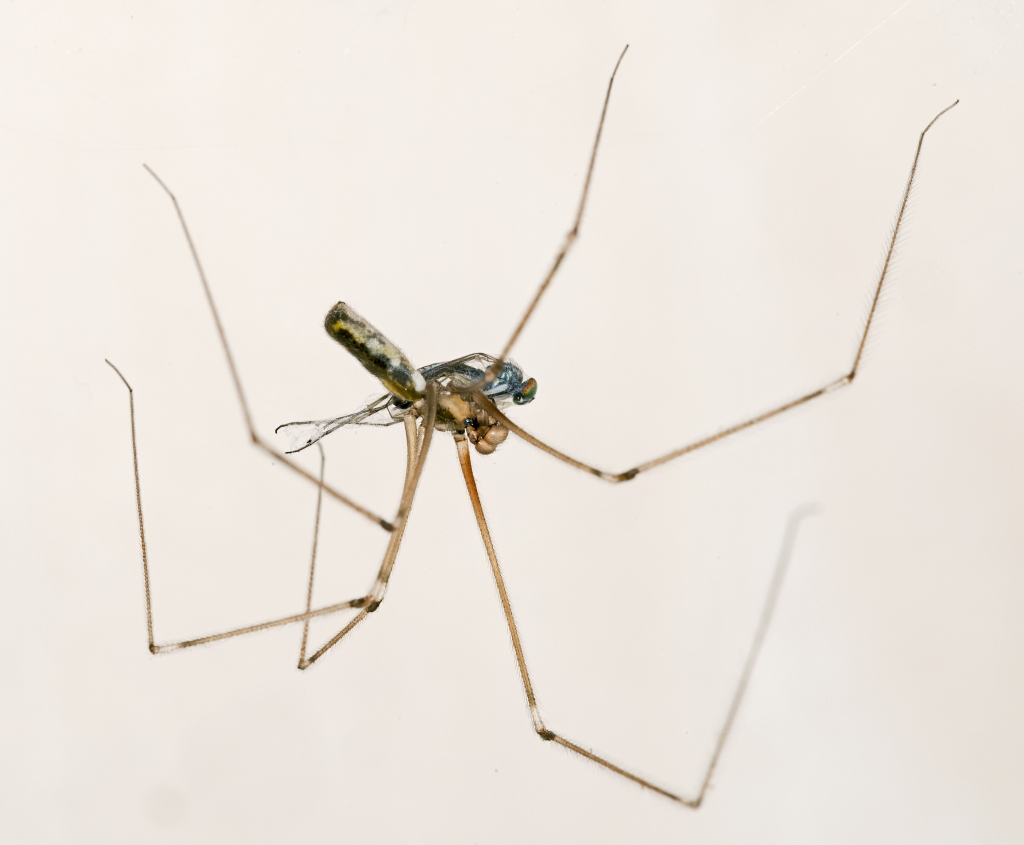
You’re likely to find spiders in the family Pholcidae inside your house, probably in the corners of your ceilings. These exceptional spiders have legs that are incredibly long and skinny in proportion to the rest of their body. This has given rise to their common name, “Daddy Long Legs”. Contrary to common legend, these spiders do not have particularly potent venom. Actually, no Pholcidae are able to harm humans.
There are three species of Pholcidae currently found in the UK. The most common of these is called Pholcus phalangioides. This species has a tubular body that is at most 1cm long.
This species is skilled at feeding on other spiders, and is therefore a good example of a spider cannibal.
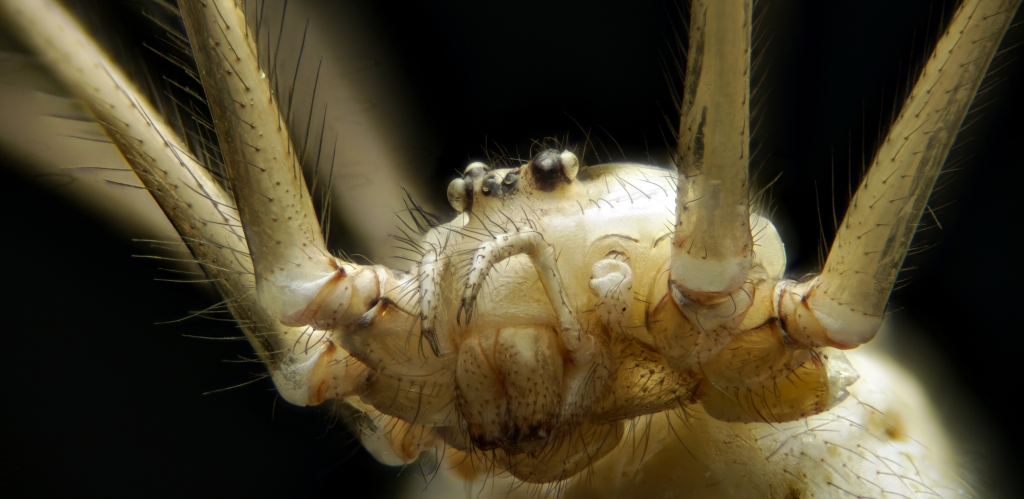
This spider is not aggressive, though. Indeed, when threatened, its first action is not to attack, but rather to shake wildly in its web, kind of like it’s dancing. This behaviour confuses potential predators and makes the spider more difficult to catch. You can observe this behaviour yourself by taking a pencil and prodding the edge of a P. phalangioides web in your house.
Family Araneidae
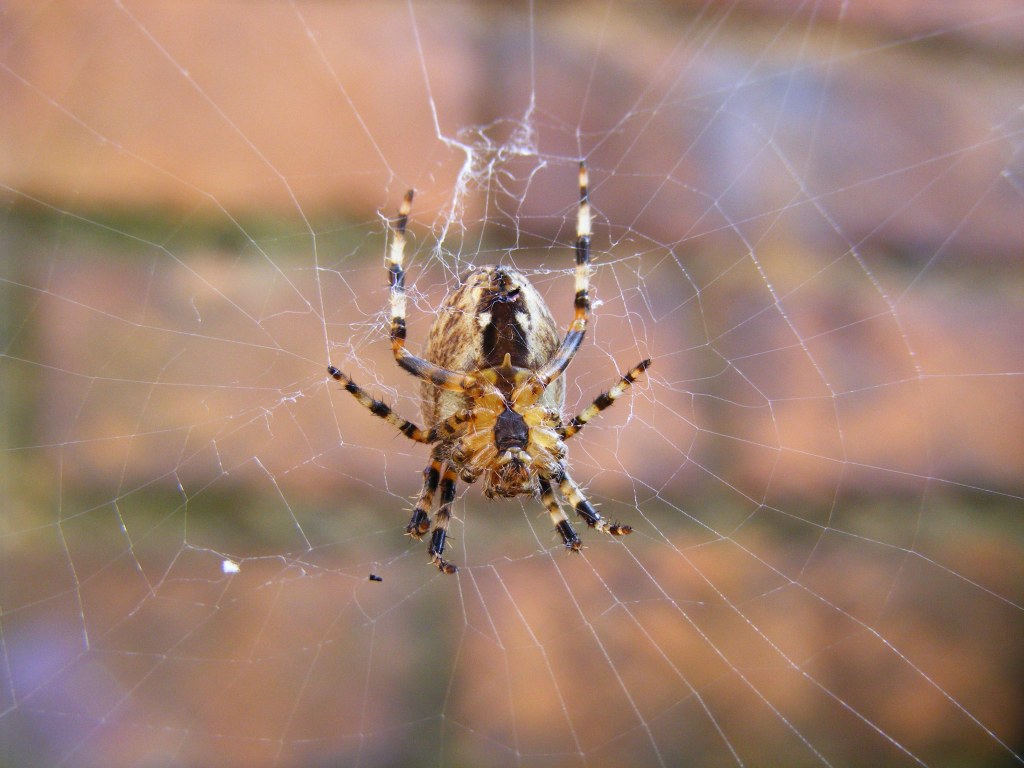
Araneidae are amongst the most widespread of any spider family. They are found everywhere in the world except Antarctica. At your house, these spiders are likely to be found outdoors. This is in part because they build their webs where many insects (a favourite food) live.
Araneidae spin orb webs that are vertical in orientation. These webs may look simple, but they are actually highly complex and made of different types of silk.
The “spokes” of the web (that is, the straight lines of silk passing through the web centre) are made of a non-sticky but very sturdy type of silk.
The “capture spiral” (that is, the spiral of silk radiating from the web centre) is made of a very sticky silk, which ensnares insects that land in the web.
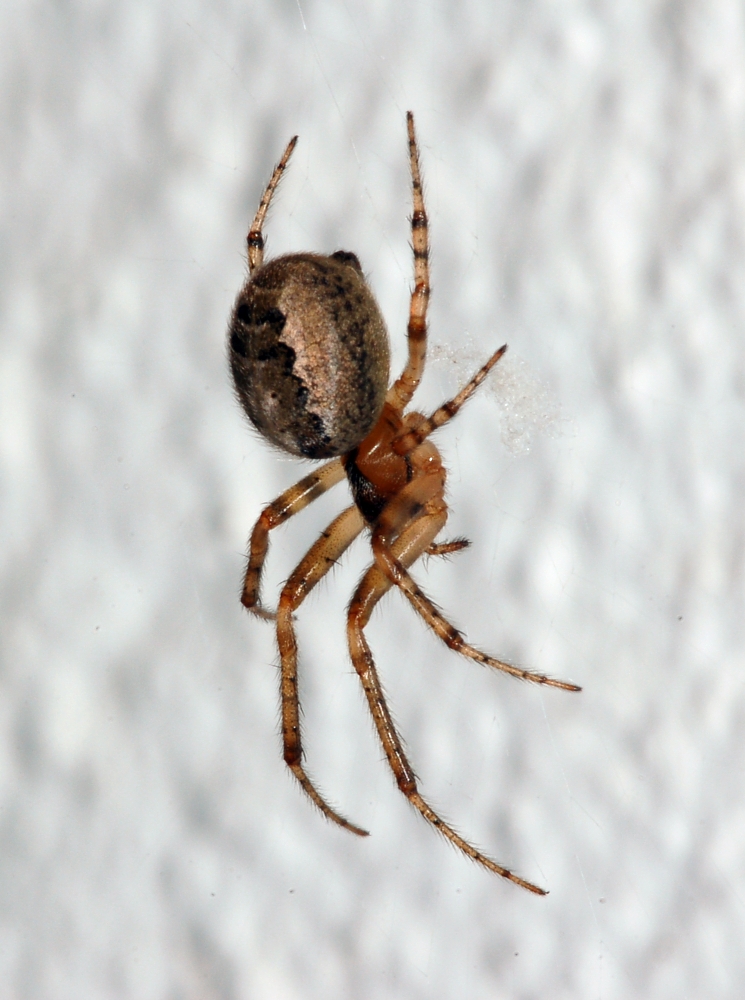
In Britain, one of the most common species of Araneidae is Zygiella x-notata. This species likes living around metal, which warms in the sun, and has an easily recognizable web.
At first glance, it looks very much like a typical Araneidae web. It’s made of spokes and a capture spiral, which are arranged in a vertical orientation. Webs of Z. x-notata, however, have a chunk missing, typically in the top-right or top-left corner. There is no capture spiral here, and only one line of silk passes through the centre of this space.
Can you find Zygiella x-notata around the outside of your house?
Family Agelenidae
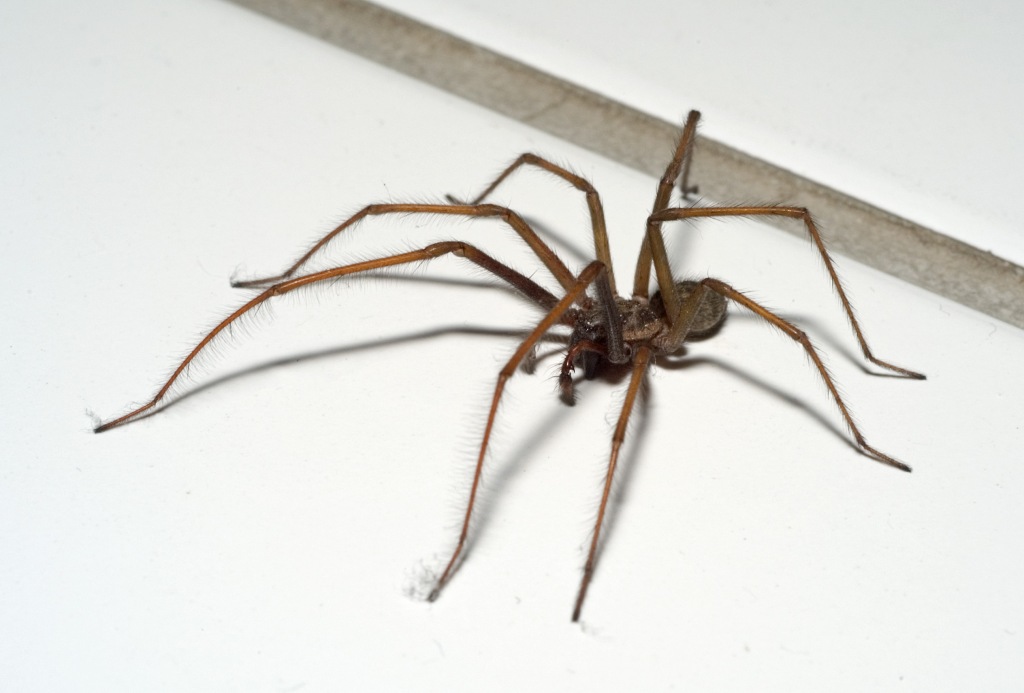
Commonly known as grass spiders, Agelenidae are fast-moving spiders that build funnel-like webs. In Britain, agelenids in the genus Eratigena are best known to most people. This is because this genus is home to the giant house spiders.
Despite their scarily impressive size, giant house spiders are anything but scary. The three species that live in Britain are rather fearful critters, which stick to the shadows of houses and – like most spiders – vastly prefer to go unnoticed rather than attract attention.
Although these spiders are most frequently found in early Autumn (when mature males go looking for females with which to mate), they are still present in springtime. Juveniles grow throughout springtime and will moult several times before reaching adulthood.
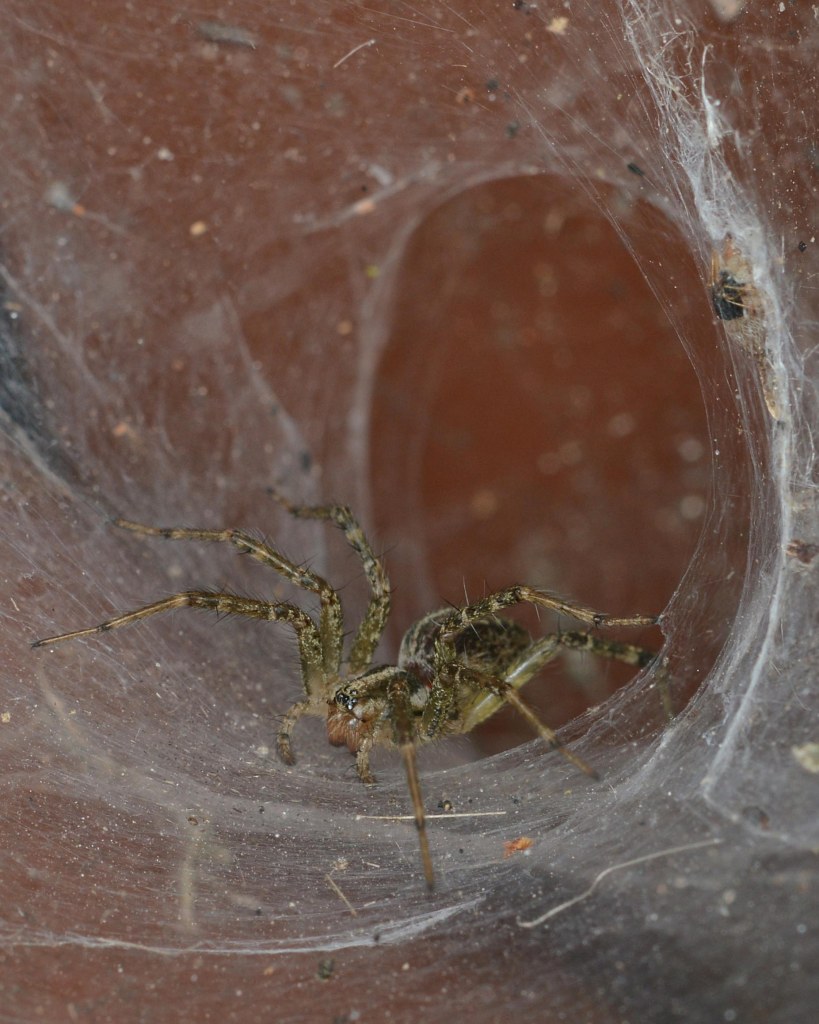
My favourite thing to do with Agelenidae is to tease them out of their webs. There are several ways to do this, but my favourite way is with an electric flosser. Upon finding a funnel web, take the electric flosser and turn it on after touching the tip to the web’s edge.
The ensuing vibration perfectly mimics the movement of an insect that is captured in the web. If you’re lucky, the spider within the web will dart out and attempt to capture the “insect”.
Don’t have an electric flosser? You can also twirl a long piece of grass on the web, or a strong piece of hair.
Family Salticidae

Without a doubt, spiders in the family Salticidae are the most charismatic out of any group. These jumping spiders are perhaps best known for the two large eyes that occupy the front of their cephalothorax. Salticidae eyes are incredibly complex. They can perceive colour, move their retinas independently from each other, and are key components of what allow salticids to strategically pursue and track down their prey. Do you know the trick where you make a cat follow a laser pointer? You can do the same thing to a jumping spider.
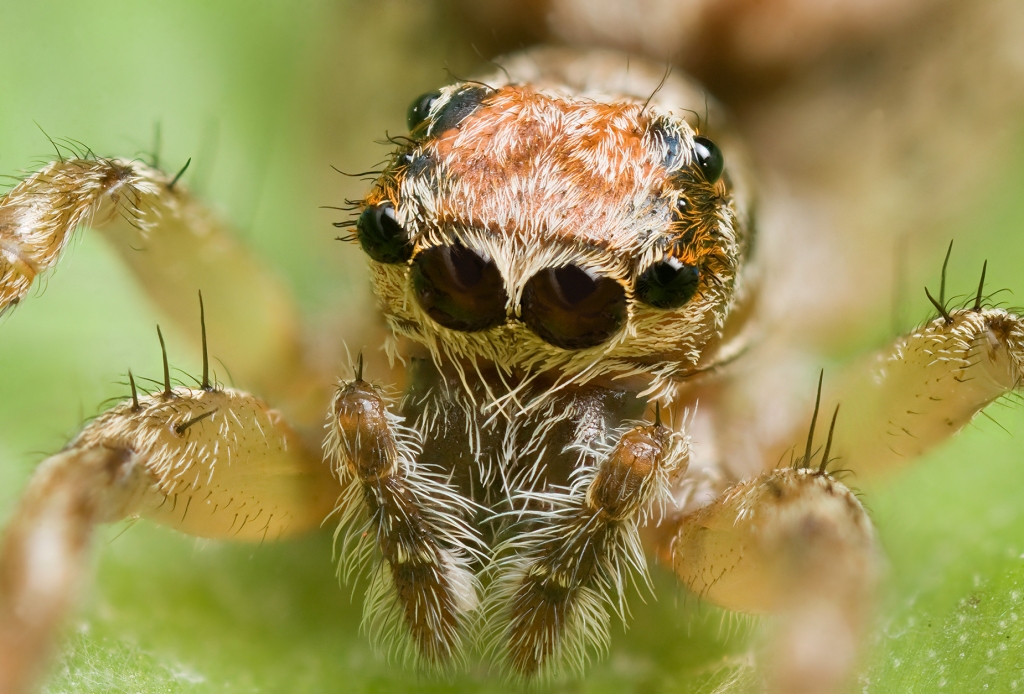
It is rare to find a jumping spider in a web. This is because they normally only build webs when mating or making / caring for egg sacs. Like most spiders, though, jumping spiders are near constantly producing silk. This silk is trailed behind the spider and creates a kind of “lifeline” for the spider. This is helpful, for example, if a salticid jumps from a surface and misses its intended prey. It can simply return to its original position by climbing back up its “lifeline”.
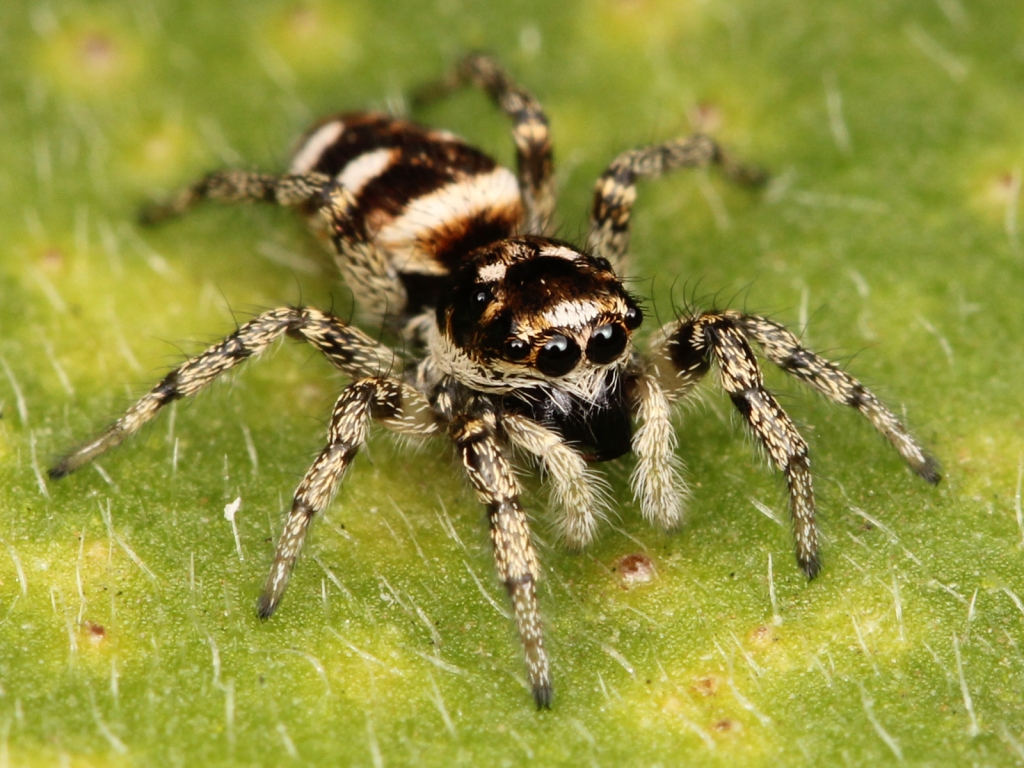
In the UK, one of the most commonly found species of jumping spider is Salticus scenicus. It is commonly called the “Zebra jumping spider” due to its zebra-like pattern.
These spiders mature in early springtime, and it’s therefore a great time to spot adult males and females in and around your homes. Can you find one?
Family Linyphiidae
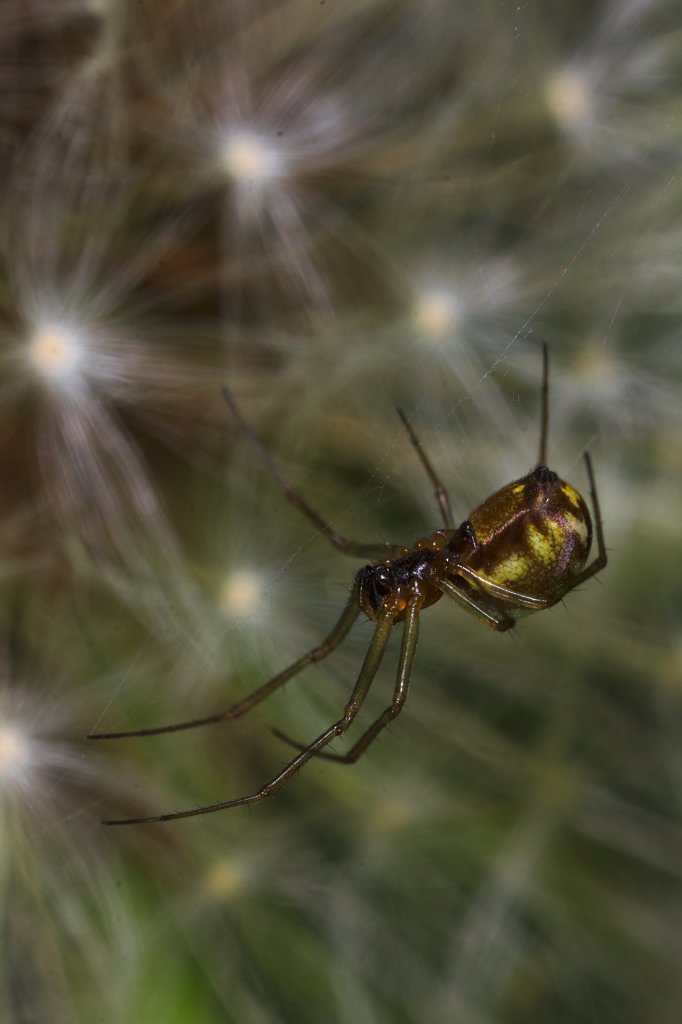
Linyphiidae are amongst the most fantastically diverse spiders. Deceptively simple in appearance, their bodies can actually be incredibly intricate when viewed under a microscope. For instance, the eyes of some linyphiids are located on a conical structure that projects from the remainder of their body!
In Britain, Linyphiidae are commonly called “money spiders”. It’s said that you will experience good luck if one crawls over you. These spiders will be commonly found in your garden.
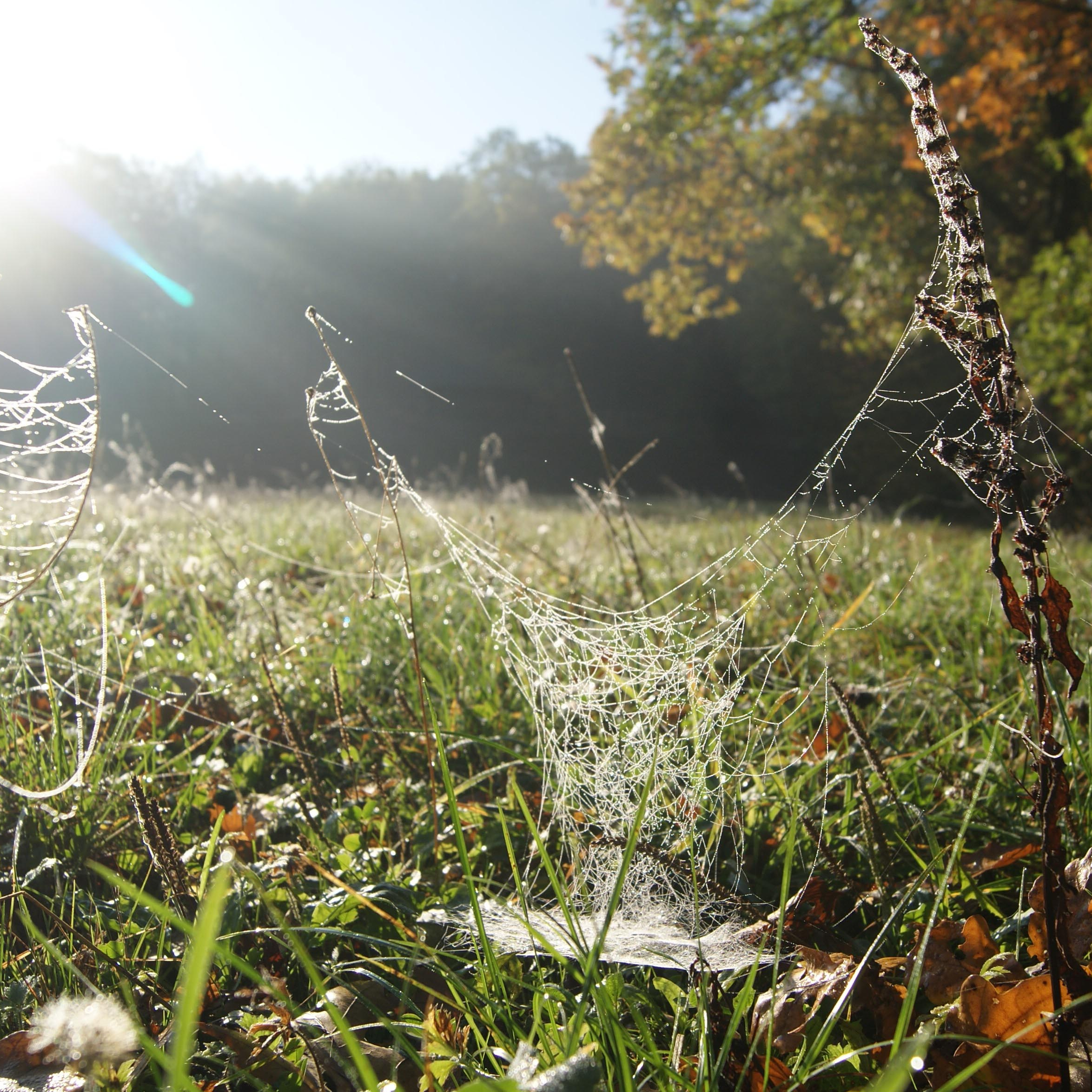
Aside from bringing people luck, Linyphiidae are best known for their webs. Linyphiidae webs are built in two parts. The first – positioned on top – is a dome-like structure that catches insects as they fly upwards from vegetation into the air.
The second – positioned below the dome – is a sheet-like structure under which the spider lives. Insects that fly into the dome fall into the sheet-web below, where the waiting spider can consume them.
Why should we care for spiders?
Spiders contribute a number of functions that are important to a variety of global industries, ranging from food production to haute couture fashion.
In the UK, for example, spiders in wheat fields are part of integrated pest management (IPM) schemes. IPM aims to control pest abundances by utilising natural predators in addition to applying chemical pesticides or other alternatives. Spiders are a valuable component of IPM schemes. This is because they are generalist predators, which means that they are not picky eaters.
Indeed, my own research focusses in part on how spiders contribute to IPM in agricultural systems. I study the ecology of spiders in Indonesian oil palm plantations.
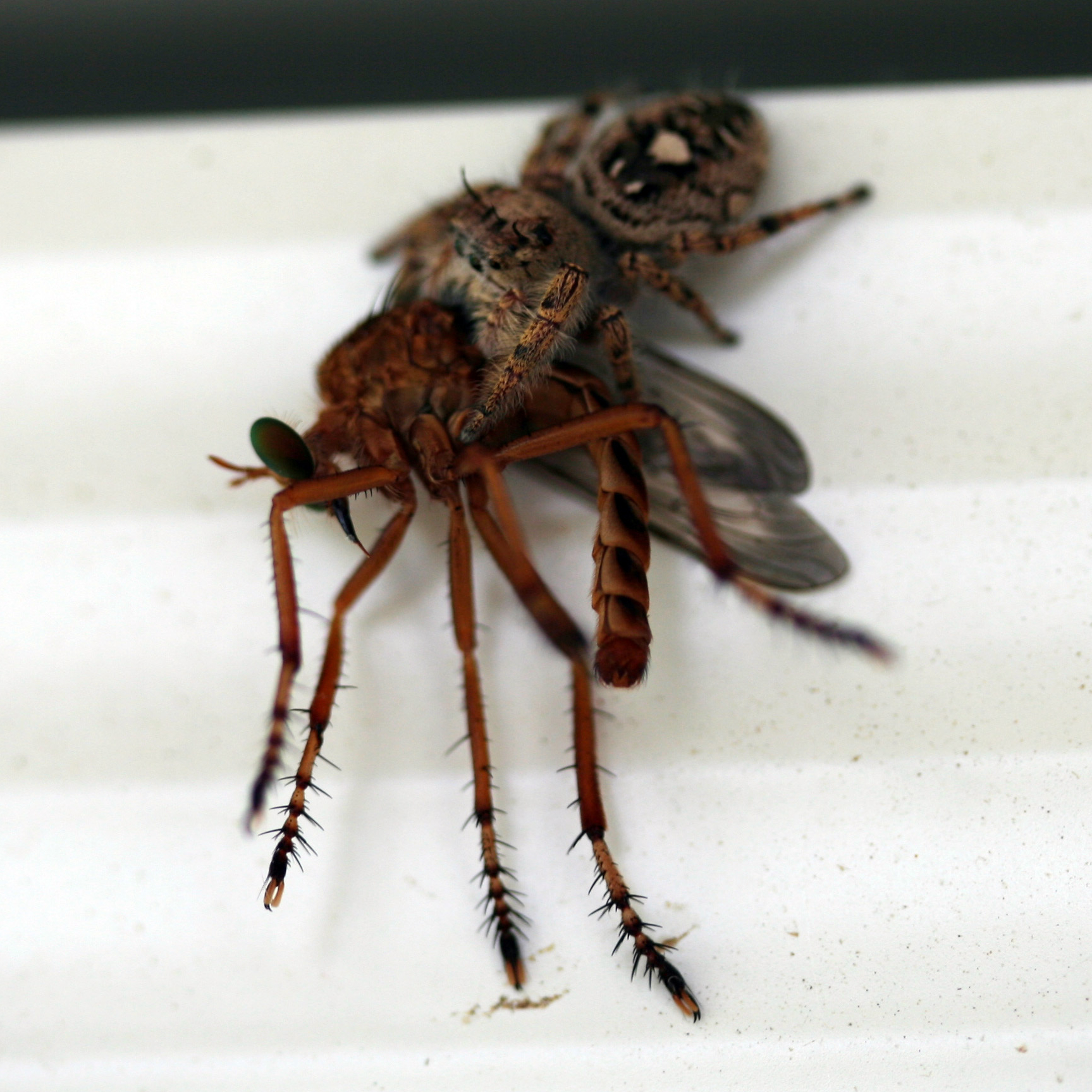
Spiders do not only control pests in agricultural systems, of course. They also do this around our houses, and this is one reason why it is very important to not kill the spiders that live around us. Spiders in our homes kill and eat pesky insects such as fruit flies and mosquitos.
It’s important to remember that no spiders in the UK pose a medical threat to healthy humans. To this end, we can think of spiders as harmless housemates that – for no extra cost – help clean the house of insect pests and build beautiful ornamental webs.
Which commonly found British spider family are you?
Take this anecdotal quiz to find out!
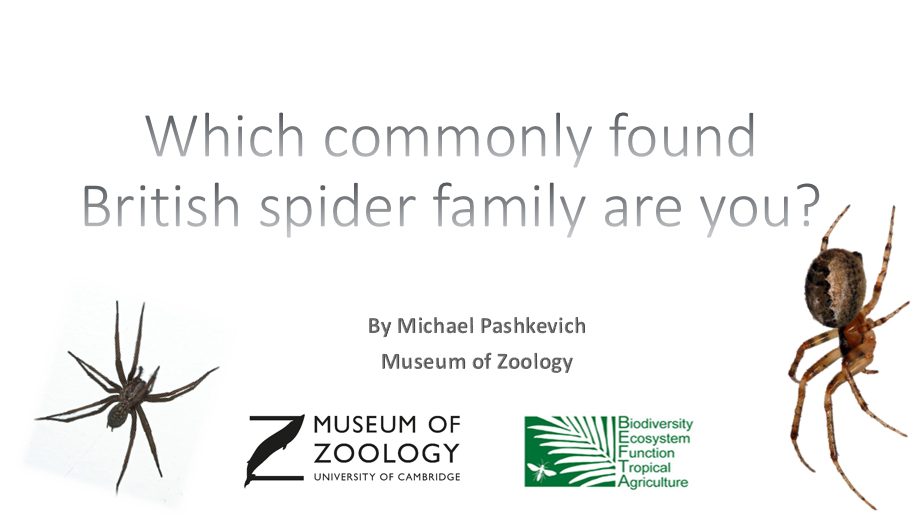
Find out more about research from the Insect Ecology Research Group.
Explore the work of the Biodiversity and Ecosystem Function in Tropical Agriculture programme here and on Twitter here @BEFTAprogramme.




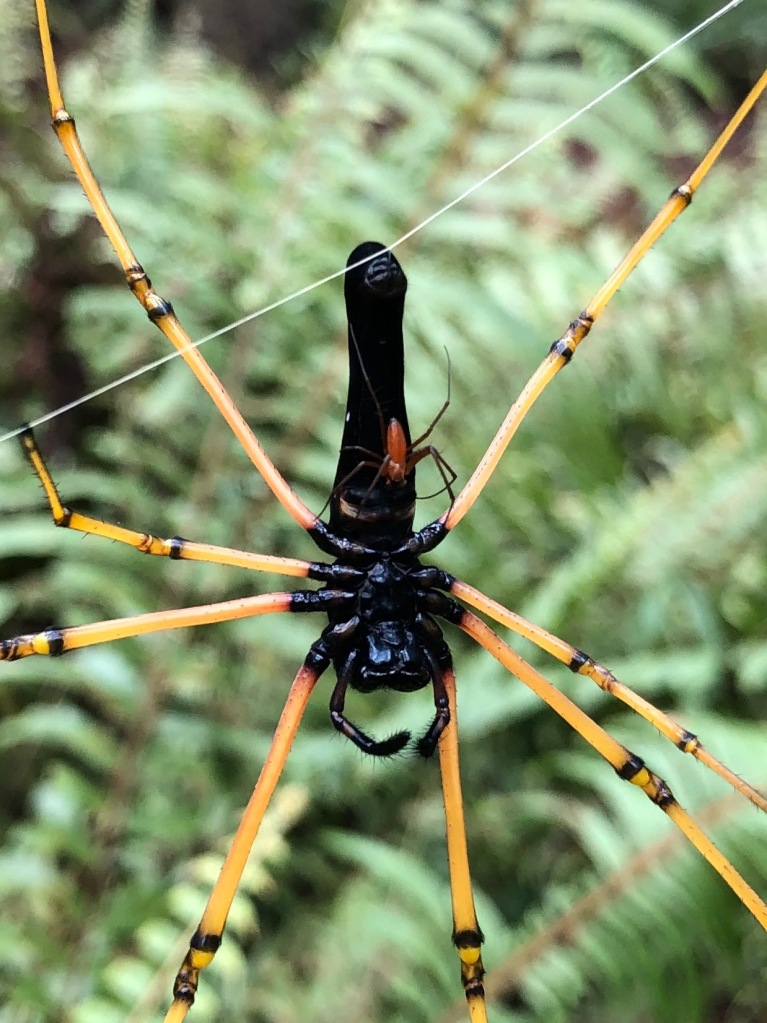
5 thoughts on “Your friendly neighbourhood British spiders”